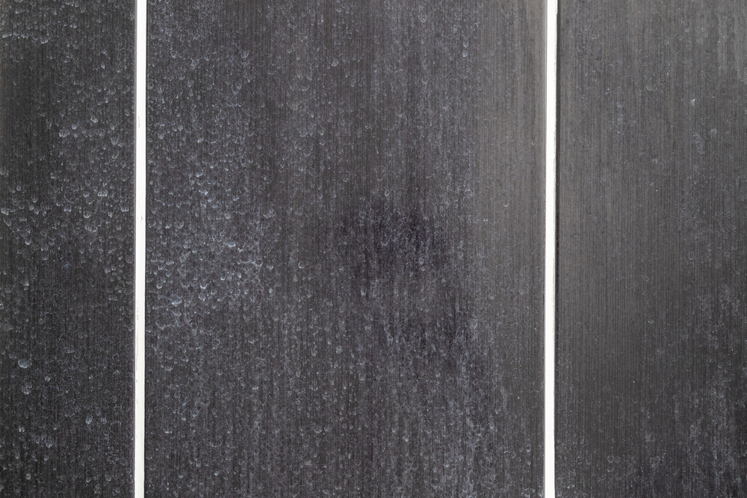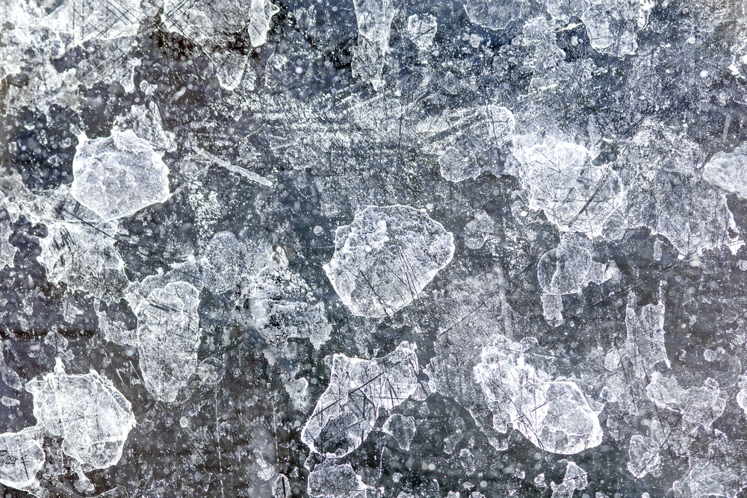Without regular care and maintenance, your shower screen may fall victim to limescale and pesky watermarks. To prevent this from happening, it’s a good idea to give your shower screen a thorough clean at least once a month, to bring back that ‘new bathroom sparkle’. But what is the best way to clean shower screen glass? In this guide, we will explain how to clean shower screen glass successfully, and ways you can prevent limescale and watermarks from appearing in the first place.
How do watermarks form?
Water marks are caused when hard water – water that is high in minerals such as lime, calcium, and silica – dries and leaves deposits on bathroom surfaces, such as glass. If you have a shower enclosure or shower screen, you’ll know the tell-tale signs of watermarks all too well, and how much of a nuisance they can be to remove. This is why proper cleaning must be carried out to ensure that your shower screen is squeaky clean 24/7, and free from watermarks. and limescale build-up.
How does limescale form?
Limescale, also known as calcium carbonate, is a hard, crusty deposit that ranges in colour from white to green and occurs in home with hard water. When this mineral-rich water passes through your shower head, it clings to everything it touches, from the glass screen, tiles and fixtures. Once the water evaporates, the limescale deposits are left behind, which can build-up overtime if not cleaned regularly, ruining the sparkle of your shower

Watermarks on a shower screen. | Photo credit: mikecphoto / Shutterstock
What is the best way to clean shower screen glass?
There are several steps you can take to clean shower screen glass, but the best trick is using an ingredient found in most of our kitchen cupboards: white vinegar. This special ingredient is a real all-rounder in the cleaning department, but particularly in the bathroom when it comes to removing limescale and watermarks.
But if you decide to opt for this method, make sure you are using white distilled vinegar, as opposed to malt or cider vinegar, as it won’t clean as thoroughly. It’s worth noting that coloured vinegar can stain some surfaces too, so it’s best to avoid where possible.
How to clean shower screen glass – step by step guide:
1. Clear your shower screen / shower enclosure, and the area surrounding it. This includes toiletries, shower mats and anything that isn’t fixed, such as suction holders.
2. Clean the shower screen using a standard shower cleaning product and a damp sponge. Alternatively, if you would prefer to use a natural ingredient, use white vinegar.
3. Once you have scrubbed the shower screen and removed all surface marks, rinse it down with cold water.
4. Next, it’s time to combat limescale and watermarks. Use a squeegee to remove as much excess water as you can, to ensure your shower screen dries clear and smudge-free.
5. Once your shower screen is dry, mix together equal parts water and white vinegar.
6. Spray the diluted white vinegar mixture onto your shower enclosure, making sure that it’s completely covered.
7. Buff with a soft cloth (such as cotton) to completely wipe the area. If any stubborn stains won’t come off, scrub the problem area with more of the white vinegar.
8. Next, squeegee the area and buff the shower enclosure with a microfibre cloth. This will help to produce the perfect shine.
9. If water marks still show up or stubborn marks persist, then turn to a more specialist water stain remover.
Please note: If you use a stronger water stain and limescale remover, be sure to wear protective gloves and open all windows and doors (and turn on your extractor fan if you have one) before spraying the product onto the glass.
10. Be sure to follow the instructions on the product carefully and do not leave on the surface longer than recommended.

Limescale on a shower screen. | Photo credit: David Pegzlz / Shutterstock
How to prevent hard water stains and limescale
When it comes to limescale removal, taking preventative measures can save you an awful lot of time in the long run. If you live in a hard water area, it’s difficult to stop the pesky mineral-rich water from entering your home, but there are three things you can do to prevent the damage to your shower screen:
1. Buy a shower squeegee
Squeegees can be picked up from most supermarkets or hardware stores, and they aren’t expensive. Simply get them out every time you have a shower to wipe the moisture off of the glass of your enclosure or shower screen to prevent watermarks from appearing.
If your watermarks are particularly troublesome to remove, you might want to try spraying Mr Muscle Shower Shine, or a diluted white vinegar solution, onto the glass after every shower before wiping down using the squeegee.
Top tip: If you haven’t got a squeegee to hand, you can use a microfibre cloth to dry off the screen as much as you can post-shower.
2. Buy a new shower enclosure
Today, there are a range of brands that sell shower enclosures that claim to be highly durable and able to withstand the build-up of soap residue, limescale and watermarks, even in hard water areas. This makes cleaning an easier task as your glass is left looking as good as the day you bought it, only needing cleaning every so often rather than after every shower use.
3. Buy a water softener
If you find your watermarks and limescale is a recurring problem despite ample care and maintenance, you may have particularly hard water in your area. When this happens, the hard water will be causing damage to your pipes and appliances, which is the last thing anyone needs. As a result, it’s worth looking into buying a water softener to reduce the number of minerals entering your pipes. But beware, this should be your last resort if the previous two options did not work, as water softeners can cost anywhere between £300 to £3,000.
If you’re looking to get the whole room shining, try our other cleaning tips for your bathroom.
Feature image credit: David Pegzlz / Shutterstock
